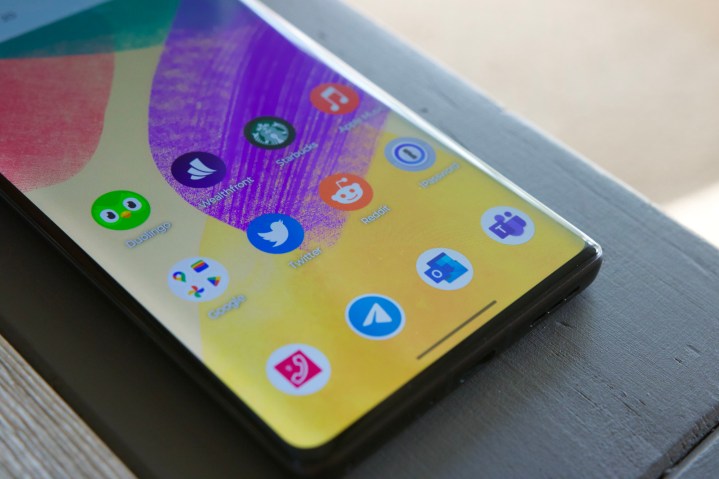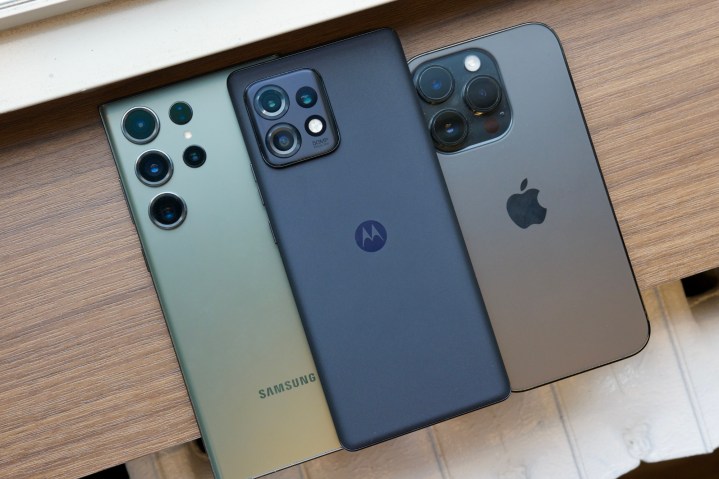
The iPhone 14 Pro is an incredible smartphone. It’s been my phone of choice for the last few months — and there’s very little I dislike about it. The size is perfect, it’s ridiculously fast, the display looks great … I could go on and on. Simply put, it’s a phone that’s done everything I’ve asked of it, and it’s given me very little reason to look for a new go-to smartphone.
But that’s starting to change. I recently wrapped up my review of the Motorola Edge Plus (2023), and the more I sit back and reflect on my time with the Android phone, I’ve started to realize something. I barely touched my iPhone while reviewing the Edge Plus, and even now that the review is published, I still find myself grabbing for the Motorola handset over the iPhone.
The Edge Plus feels like it was made just for me

There are plenty of technical reasons why the Edge Plus (2023) is a one of the best Android phones of the year. But what’s really struck me is how so much of the phone feels like it was made just for me.
It starts with the design. I hate big and bulky phones — but I also love having a large display for watching YouTube, playing Marvel Snap, and doing Duolingo lessons throughout the day. Those two things typically don’t go hand-in-hand, but the Edge Plus is able to walk the line between both.
Despite having a 6.7-inch OLED screen — the same size as the iPhone 14 Pro Max — the Motorola Edge Plus (2023) is 35 grams lighter. Hell, it even weighs less than the regular iPhone 14 Pro, despite having a much larger screen. I switched from the iPhone 14 Pro Max to the iPhone 14 Pro largely because I couldn’t take the cumbersome design of the Pro Max, but thanks to the Edge Plus, I can go back to a big-screen phone without carrying around a brick in my pocket. It’s just lovely.

I’ve also come to terms with the fact that I like curved screens. That may sound controversial when so many people constantly complain about curved displays on smartphones, but I actually quite enjoy them. That’s important, because I think Motorola did a fantastic job with the curves on the Edge Plus.
The curved edges are significant enough that they make the display look borderless, and swiping from the edge of the display is extra smooth and comfy. But they also aren’t so drastic that they cut into apps or cause major problems with the touchscreen.

Then there’s Motorola’s excellent software. The interface looks very similar to what you’d find on a Google Pixel with Android 13. From the bold Quick Settings buttons to the thoughtfully designed Settings app to the playful animations throughout, this is exactly the type of Android interface I love the most.
But Motorola doesn’t stop there. The company adds its own flair to Android with a few additional — and very thoughtful — features you won’t find on a Pixel. Some of my favorites are the gestures; specifically, chopping the Edge Plus to turn on the flashlight and twisting it to open the camera app. They’re easy to use and offer instant access to two apps I use on a daily basis. I also love the PIN pad scramble feature, which randomizes the order of your lock screen PIN each time you use it — helpful for preventing prying eyes from getting into your phone.
Also, as someone who loves customizing my phone like there’s no tomorrow, I adore Motorola’s slick Personalize interface. It makes it dead simple to change your lock and home screen wallpapers (and add effects to them), system font, accent color, app icon shape, fingerprint unlock animation, display size, and more. You can also create multiple themes based on these customizations, allowing you to completely change the look of your phone with a single tap.
Motorola is far from the only company that adds its own features on top of Android, but it does so in the most tasteful way I’ve ever seen. It doesn’t overwhelm you with bloatware, the extra features are genuinely helpful, and you get them while still retaining Google’s excellent Pixel interface.
It fixes my biggest issue with the iPhone 14 Pro

There’s another thing I love about the Motorola Edge Plus (2023) — and it’s something it destroys my iPhone 14 Pro at. Yes, I’m talking about battery life.
I love almost everything about the iPhone 14 Pro, but battery life has easily been my biggest annoyance with it. Even with moderate use, I have to put it on the charger by early evening if I want to have enough battery remaining to get though the rest of the night. And those frequent recharges take longer than I’d like, as the iPhone 14 Pro’s wired charging speeds max out at around 20 watts.

How does the Motorola Edge Plus (2023) compare? Even with fairly heavy use — including over an hour of gaming, lots of YouTube and YouTube TV, plenty of Twitter scrolling, etc. — I’m consistently getting two days on a single charge. With less frequent use, I wouldn’t be surprised if I could make it partway through a third day. It’s completely eliminated the battery anxiety I’ve developed with my iPhone 14 Pro, and it’s becoming difficult to live without.
And it’s not just that the battery lasts forever. The Edge Plus also charges really fast. Thanks to its 68W charging (and the included 68W charger you get in the box), you’ll get a full recharge from zero to 100% in under an hour. And if you’re in a pinch for a quick top-up, just 15 minutes on the charger is enough for over a 45% recharge.
I don’t want to use any other phone

I say all of this having used many different Android phones over the last year — all of which I thought could replace my iPhone.
What about the Pixel 7 or Pixel 7 Pro? I’ve tried using both — multiple times, in fact — but I’m convinced Google doesn’t want me to. Every Pixel 7 model I’ve tried has been riddled with deal-breaking software bugs. I know that hasn’t been the case for everyone, but it has been for me, and it’s made me apprehensive to rely on a Pixel.
OK — how about the OnePlus 11? I really like the OnePlus 11, but I’m not a fan of its OxygenOS software. I don’t hate it as much as I used to, but there are enough little annoyances that it really puts me off. Plus, not having wireless charging is a regular pain point.
Well … have I tried the Samsung Galaxy S23 Ultra? I have! And it’s an outstanding smartphone — one of the best phones you can buy today. But as much as I love its excellent camera system and its huge battery, the gargantuan size is something that wears on me after a while. Plus, I have my own set of irritations with Samsung’s One UI software.

I enjoy using all of those phones for different reasons, but after a while, I find myself shoving them in a desk drawer and exclusively using my iPhone 14 Pro. That hasn’t happened yet with the Motorola Edge Plus (2023), and I don’t foresee that changing any time soon.
I’m still using my iPhone 14 Pro for things like Apple Photos, iMessage, and a few iOS apps that aren’t available on Android. But for pretty much everything else, I’m reaching for the Edge Plus instead. And I’m having a great time doing so.






